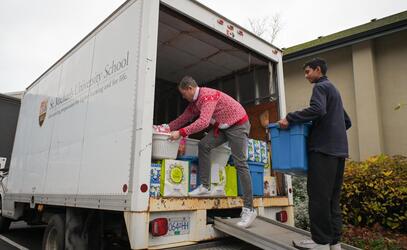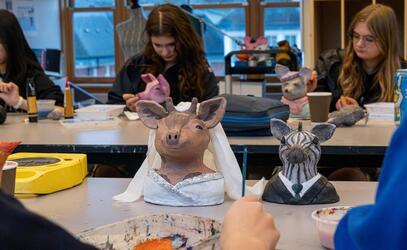This fall the Senior School implemented our new Off-and-Away smartphone policy, with the hopes of improving our smartphone culture and restoring the strength of student interaction on campus. After a year-long look at our smartphone culture, recommendations were made to limit smartphone use on campus, while not going as far as a ban. Our hope was to see more students spending their time interacting without screens, and to generally decrease screen time. In the interest of always improving, now is a good time to reflect on the first term and take a fresh inventory of where we stand.
Is the policy working?
By all accounts the new policy started strong, with a noticeable drop in screens in public places and signs everywhere of students being present, with their phones off and away. As the weeks ticked on and the weather began to change, screens began to resurface – at first slowly and then suddenly. While things are certainly better than last year, we are at a place where there are still many students absorbed in their devices.
This was always a concern given what we know about smartphones and how they interact with people’s brain chemistry. Smartphones are unlike other challenges the school faces, such as how students wear their uniforms. Hoodies, for example, are not tapping into the pleasure centres of students’ brains. For that matter, hoodies are also not making our students more anxious, more depressed and are not distracting them from their learning.
Feedback on the Policy
Interestingly, the feedback we have received on this move has been somewhat mixed. On one hand, we have heard a chorus of concern that this type of “soft ban” falls short, and that schools are no place for smartphones.
A school similar to ours up-Island has taken this approach and is no longer allowing smartphones on campus during the school day. At a recent boarding school conference in Washington, DC, I was a part of a conversation on how schools are responding to this challenge. The general sense in the room was that eventually smartphones will not be allowed in schools. Several schools in the eastern United States have taken this approach and all sung its praises. One boarding school made the move to restricting phones to students’ dorm rooms, and they are now looking at asking students not to bring smartphones to campus at all. France has taken this approach making phones illegal at schools for students younger than 15.
The flip side is represented by voices that are concerned about the vilification of tech.
These people see the benefits of tech outweighing the drawbacks and encourage schools to teach students how to use smartphones and social media for good. This viewpoint is valid and schools absolutely need to be doing this – indeed, we are doing this! The trouble is when my colleagues and I observe students on their phones in between classes, they are usually engaged in what we call idle tech time: Snapchat, Instagram, YouTube and gaming. This is precisely the behaviour that myriad studies raise concerns about and the behaviour we have a responsibility to minimize on our campus. Research and observation tells us that this type of screen time creates a distracted learner. This is not the beautiful aspect of technology and its absence from campus will not impede SMUS from producing master computer programmers, A.I. experts and robotic engineers.
We held several student focus groups last spring to help inform our Off-and-Away policy. I was struck then by how widely students recognized that we needed to shift to a more rigid policy. Those focus groups and conversations have continued since September and it is evident that our students are not in support of a policy that's stricter than Off-and-Away. Unfortunately, it is the school’s job to create the best learning environment possible for our students and sometimes this means making decisions that may be unpopular. As the school year unfolds we will continue to observe and continue to educate ourselves on this issue.
While I can’t predict what our smartphone policy will look like in September 2019, I can promise you that decisions made moving forward will have students’ best interests at heart. Sometimes the right choices are difficult to make, and over the next few months SMUS will observe and learn, and do what is best for our students.


